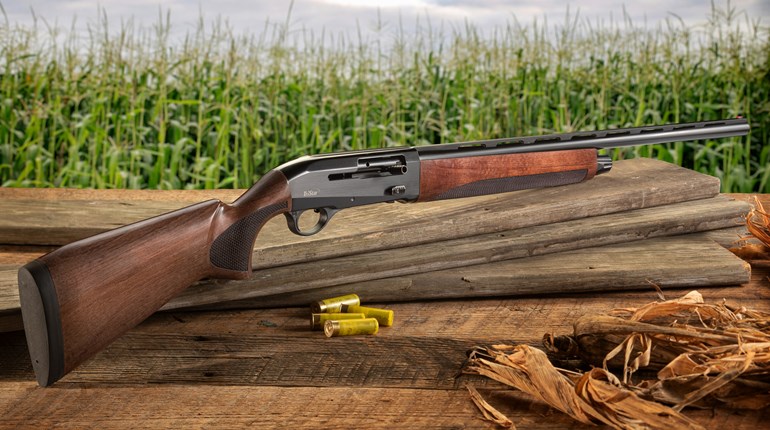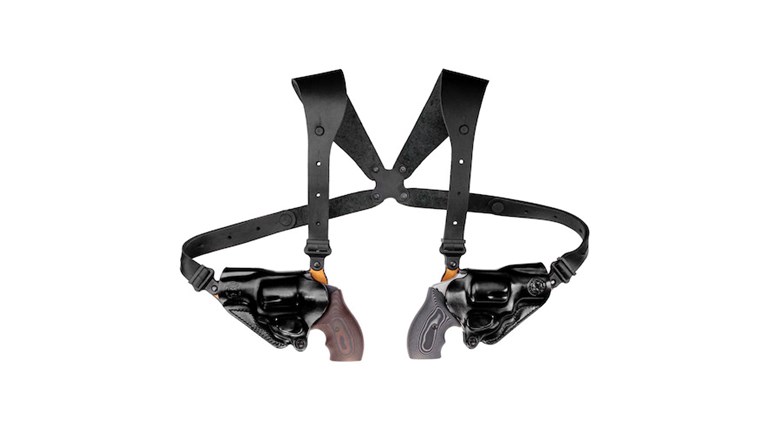
The below is an excerpt from the 1978 book, Olympic Shooting, written by Col. Jim Crossman and published by the NRA. Read Part 1.
1920—Antwerp: Everything But The Kitchen Sink (Part 2)
By Colonel Jim Crossman
While the shooting teams were being planned and selected, the American Olympic Committee was having a few problems. When Pierre de Coubertin organized the Games, he formed an International Olympic Committee. It called on James E. Sullivan—a great promoter of amateur athletics—to arouse American interest. Sullivan organized the American Olympic Committee and invited prominent citizens to become members. He appointed the officers, while he continued as secretary. The committee continued on in this fashion for many years without constitution, bylaws and rules of procedure. In the lapse between 1912 and 1920, Sullivan died and some other officers dropped out. Many doubted that the Games would be held in 1920, after so many years of war but when the International Olympic Committee finally selected Antwerp, the American group took steps to reorganize. The Secretaries of Army and Navy were invited to become honorary vice presidents, which they accepted with enthusiasm. The military services provided an active source for athletes and, equally important, other support badly needed by the committee.
A major problem at this time was shipping to Europe. With many ships sunk and the sea lanes not yet back to normal, all passenger ships were booked solid, and it seemed almost hopeless to get the Olympic team across the Atlantic. The Navy helped by sending its athletes to Antwerp on the cruiser Frederic, which remained in the harbor throughout the Games. The Army still had many troops overseas and was supplying them by Army transports, which were going over with empty passenger space.
So here was a need, and here was a good solution. There was one hitch—existing law would permit federal employees only to ride on transports. It took an act of Congress—literally—to remove this hurdle. But the hurdle was removed and the fast ship Northern Pacific was assigned to take the team over. Unhappily, she ran into trouble on her last trip into New York and had to go immediately into drydock. This left some 254 mad athletes and frantic officials stranded on the beach. The Matoika was finally rushed into port and hastily turned around, and the Olympic squads crossed the Atlantic with some discomfort in this slow, small ship. Fortunately, the shooting teams missed this excitement, since they had left by earlier ships, the rifle and pistol shooters going to Antwerp and the shotgunners ending up in England.
The complete program which the shooters found in Belgium included something for everyone, with the following elaborate list of events:
Army Rifle
- Team Match, 300 meters standing, 5-man team, 10 shots per man, Belgian target, with 6 as highest value about 12 inches in diameter.
- Individual Match, 300 meters standing, 10shots per man, same target.
- Team Match, 300 meters prone, 5-man team, 10 shots per man, same target.
- Individual Match, 300 meters prone, 10 shots per man, same target.
- Team Match, 600 meters prone, 5-man team, 10 shots per man, Belgian target, with 6 as highest value about 24 inches in diameter.
- Individual Match, 600 meters prone, 10 shots per man, same target.
- Team Match, 300 and 600 meters prone, 5-man team, 10 shots per man at each range.
Any Rifle
- Team Match, 300 meters, 3-position, 5-man team, 40 shots each prone, kneeling or sitting, and standing, target diameter 100 centimeters (39.37 inches) with 10 scoring rings.
- Individual Match, 300 meters, 3-position, conditions same as above.
Miniature Rifle
- Team Match, 50 meters standing, 5-man team, 40 shots per man, target with 10 as highest value 5 centimeters (2 inches) in diameter.
- Individual Match, 50 meters standing, conditions same as above.
Army Pistol or Revolver
- Team Match, 30 meters, 5-man team, 30 shots per man, 50-meter pistol target, 10 highest value 50 millimeters (2 inches) in diameter.
- Individual Match, 30 meters, same conditions as above.
Any Pistol or Revolver
- Team Match, 50 meters, 5-man team, 60 shots per man, 50-meter pistol target, 10 highest value 50 millimeters (2 inches) in diameter.
- Individual Match, 50 meters, same conditions as above.
Running Deer
- Team Match, single shots, 5-man team, 10 shots per man, deer at 100 meters, ran across a 23-meter (25 yards) opening in 4 seconds.
- Individual Match, single shots, conditions as above.
- Team Match, double shots, conditions same as above except 20 shots per man, fired 2 shots per run of the deer.
- Individual Match, double shots, conditions as above.
Clay Pigeon Shooting
- Team Match, 6-man team, 100 birds per man, 90 on the continuous-fire system and 10 birds unknown angles unknown traps, 1 man up, gun position optional.
- Individual Match, 100 birds per man, 90 on the continuous-fire system and 10 birds unknown angles unknown traps, 1 man up, gun position optional.
The Belgians had explained that things might be rough, since many ranges had been destroyed during the war. When the U.S. rifle team finally arrived at Beverloo, they decided that the range must have been missed by accident, because it should have been destroyed.
The rolling, barren ground had many hills and hollows on it and the sandy soil was covered with a short, wiry brush, which had to hand on for dear life to keep from being blown away by the persistent winds—the same winds which kept the sandy surface constantly on the move. Each firing point covered three targets, and was separated from the next firing point by about 100 yards and a high embankment running the full length of the range.
The firing line for 54 targets was thus stretched out to cover more than a mile. To add to the unusual qualities of the range, the firing line and target butts were built in a semi-circle, with the firing points at the two ends firing at right angles to each other. The crowning touch, though, was the series of pyramids. In order to get the shooters up high enough to see over the hillocks, rude pyramids of sand and sod were raised up above the surrounding ground 3 to 15 feet and the firing point was on top of the mound.
The American riflemen had expected that the sling would be barred in the Army rifle competitions and that individual spotting scopes would not be permitted. They practiced with these ideas in mind, intending to protest if such were the rulings. Sure enough, the sling was outlawed, the Americans protested and, as they expected, lost. But to their great surprise, the Belgians offered no objection to the use of spotting scopes—and the Americans had been so sure scopes would be prohibited that they had left practically all the scopes at home.
The running deer matches were the first rifle events fired, and they took place at Brasschaet, near the shotgun range. Just a few weeks before the games were scheduled, Walter Winans had done some fine shooting on the deer target in England, setting some new world records. All shooters were saddened by the news of his death a short while later. He did not quite die in harness, but nearly so—he died while driving in a trotting race.
The American team had little chance to practice for the running deer event and the results showed the general lack of U.S. interest. Norway led the way, winning both team and individual matches, while the best the U.S. could do in the four events was one bronze medal in the single-shot team match.
Under the rules at Antwerp, in both the rifle and pistol matches, it was possible for the shooter to count as his score in the individual match the score he fired in the team match, which explains why identical scores often appear for an individual in both events.
Take the miniature rifle matches, for example. The 5-man team match was 40 shots per man, standing, at 50 meters on a target with a 10-ring about 2 inches in diameter. The United States was in first place by some 26 points, 1899 to 1873 for second place Sweden. New shooter Larry Neusslein of Washington, D.C., was high man on the team with 391. He was followed by Capt. Arthur Rothrock with 386 and Sgt. Dennis Fenton with 385. They let these scores also stand in the individual match and they were good enough to win all three places in the individual.
While most of the foreign shooters used the heavy Schuetzen or free rifle, Neusslein used a Winchester musket with Pope barrel and set triggers. Rothrock and Fenton used the Stevens rifles with set triggers which had been provided the team before it sailed.
Coming soon—Part 3 of our look back at the shooting events of the Antwerp 1920 Olympic Games. Be sure to subscribe to the free Insider newsletter for the latest updates.

Photo: The Norwegian shooting team in action at Beverloo Camp during the Antwerp 1920 Olympic Games.
Read more: Athens 1896 Olympics: The First Shots For Record



































